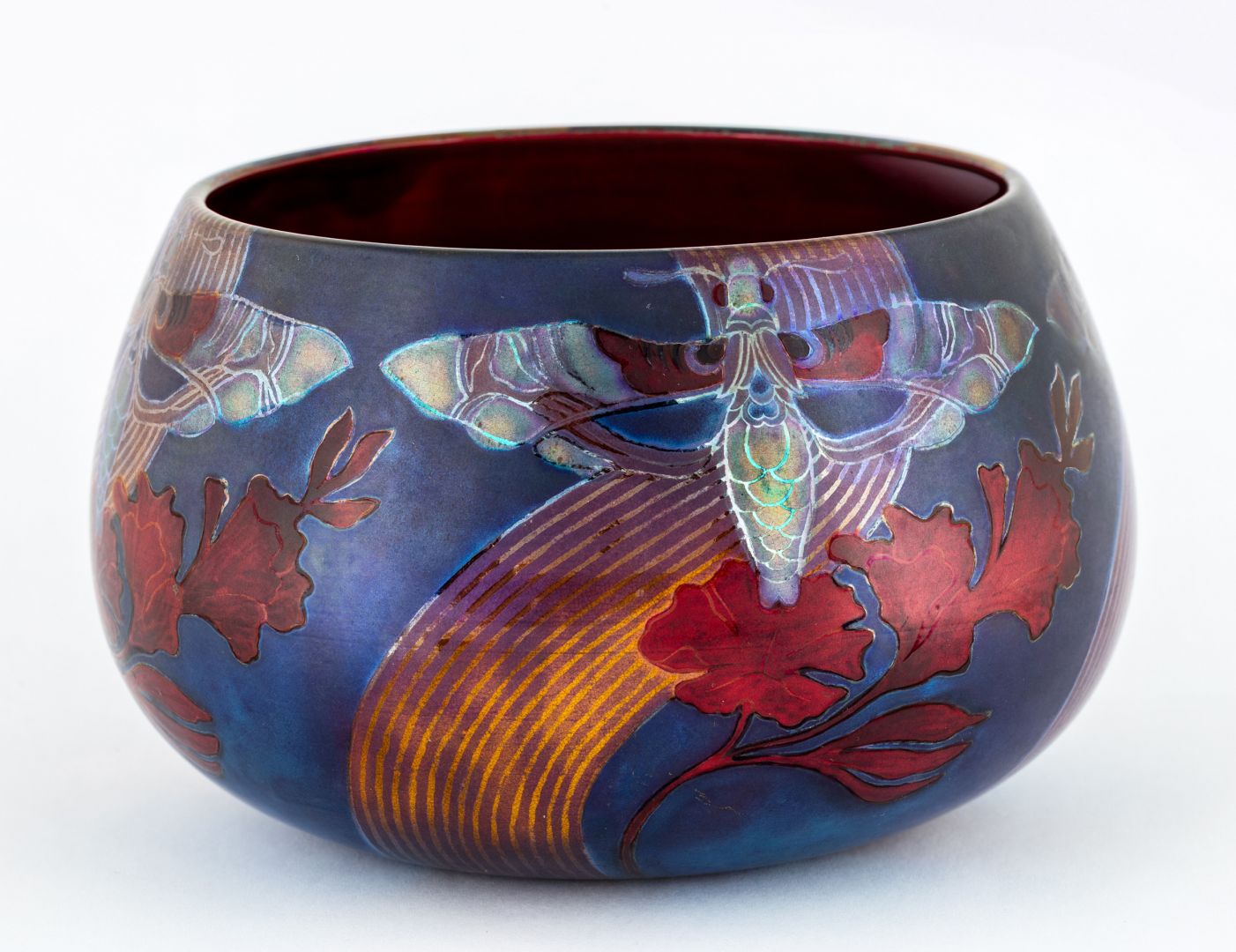Hall 3 - 5. view
Plant Holder
Plant holder, Zsolnay factory, Pécs, c. 1900–1904
wheel-thrown moulded earthenware, painted with coloured eosin; rim diameter: 15.5 cm, base diameter: 9 cm, height: 12 cm; hand-drawn marking on the base: five tower trademark inside a dotted circle, with ZSOLNAY PÉCS inscription
Historical Collection, Inv. No.: 53.1738.1.
There is a particular emphasis on Art Nouveau creations within the applied arts collection of the Herman Ottó Museum. The 1904 National Applied Arts Exhibition played a significant role in the expansion of the collection, which introduced this Europe-wide popular art style to the region. Citizens of Miskolc purchased several items from the exhibition and the museum also acquired the first Art Nouveau pieces of its collection during this event. The collection was developed purposefully by museum director Andor Leszih, who was committed to idea of combining Art Nouveau efforts with the search for a national art style.
The products of the Zsolnay factory were massively successful at World’s Fair events since 1873 and they also proved to be popular at the exhibition in Miskolc. The factory specialized in using eosin technique, an iridescent type of glazing with a metallic sheen, which was developed a decade prior by the experts of Vilmos Zsolnay. This item was made after his demise, under the leadership of his son, Miklós Zsolnay, who carried on with his father’s legacy and used the form language of the Art Nouveau style to develop new moulds, glazes and motifs. The plant holder from the 1904 exhibition represents a range of products designed to suit the needs of the bourgeois. Its short, bulbous shape is decorated with natural motifs painted on with eosin technique. The deep blue background and the beautiful night butterflies evoke the romantic atmosphere and the peace and quiet associated with night hours.
Andrea Pirint
